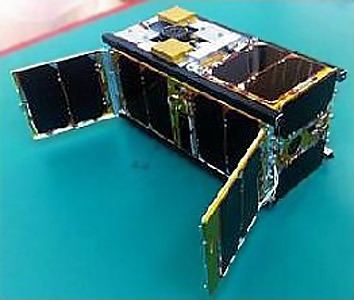Mission type Technology Launch site Tanegashima Y2 Deployment date 4 October 2012 Inclination 51.65° Launch mass 2 kg | Spacecraft type 2U CubeSat Deployed from ISS Launch date 21 July 2012 Inclination 51.65° Rocket H-IIB | |
 | ||
Operator Tohoku University
Wakayama University Manufacturers Tohoku University, Wakayama University Similar PROITERES, Waseda‑SAT2, Super Low Altitude Test Satel, Shin'en, Space Flyer Unit | ||
Raiko deploys from the international space station
Raiko (Japanese: 雷鼓, literally thunder drum) is a Japanese satellite which was built and operated by Tohoku and Wakayama Universities. A two-unit CubeSat, Raiko was deployed from the International Space Station on October 4, 2012, having been launched in July.
Contents
- Raiko deploys from the international space station
- Kid rock all summer long official music video
- References
Raiko was launched aboard the Kounotori 3 spacecraft, atop an H-IIB carrier rocket flying from Pad 2 of the Yoshinobu Launch Complex at the Tanegashima Space Centre. The launch occurred at 02:06 UTC on 21 July 2012. Four other CubeSats were launched with Raiko; We-Wish, Niwaka, TechEdSat and F-1. The five CubeSats was delivered to the International Space Station for deployment. CubeSats were deployed from Japanese Experiment Module Kibo via the J-SSOD system on October 4, 2012 .
Named after a Japanese god of thunder, Raiko is a 2-kilogram (4.4 lb) spacecraft, which will be used for technology demonstration. It carries a camera with a fish-eye lens for Earth imaging, a prototype star tracker, a deployable membrane to slow the satellite, lowering its orbit, a photographic system to measure the satellite's movement relative to the International Space Station, and a Ku-band antenna for communications and Doppler ranging experiments.
We-Wish, Raiko, FITSat 1, F-1, and TechEdSat travelled to orbit aboard HTV-3.
